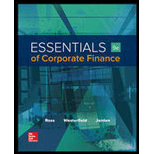
Case study:
E incorporation is a small company founded by Person T and Person J. They are the manufacturers of integral circuits. Recently, the company decided to include motherboards, PC peripheral devices, and other digital consumer electronics.
In addition to T and J, Person N who provided the capital of the company, became the third owner of the company. Each of them owns 25% of 1 million shares outstanding. The employees of the company and other investors are part of the shareholders, and own the balance shares.
The company designed the computer motherboards, which are more effective and less expensive to manufacture; but the cost incurred to design is very high and the owners are unwilling to bring other owners. The sale of the ETI was mainly to the outsiders; at the rate of after-tax payment of value of $30 million.
Characters in the case:
Company E: Manufacturers of integral circuits
Person T: The electronic engineer and founder of the company E
Person J: The electronic engineer and founder of the company E
Person N: The new owner of the Company E
To determine: The impacts of using the extra cash dividend to pay off debts and as how it affects the value of the company.
Want to see the full answer?
Check out a sample textbook solution
Chapter 14 Solutions
ESSENTIALS CORPORATE FINANCE + CNCT A.
- Please help me answer questions 7-1 and 7-2arrow_forwardfind the balance after 7years if $55000 is invested at 6% p.a. compound annuallyarrow_forwardHow does risk-adjusted return, such as the Sharpe Ratio, influence portfolio selection beyond just expected return? Please provide a referencearrow_forward
 Survey of Accounting (Accounting I)AccountingISBN:9781305961883Author:Carl WarrenPublisher:Cengage Learning
Survey of Accounting (Accounting I)AccountingISBN:9781305961883Author:Carl WarrenPublisher:Cengage Learning Intermediate Financial Management (MindTap Course...FinanceISBN:9781337395083Author:Eugene F. Brigham, Phillip R. DavesPublisher:Cengage Learning
Intermediate Financial Management (MindTap Course...FinanceISBN:9781337395083Author:Eugene F. Brigham, Phillip R. DavesPublisher:Cengage Learning
 Financial Reporting, Financial Statement Analysis...FinanceISBN:9781285190907Author:James M. Wahlen, Stephen P. Baginski, Mark BradshawPublisher:Cengage Learning
Financial Reporting, Financial Statement Analysis...FinanceISBN:9781285190907Author:James M. Wahlen, Stephen P. Baginski, Mark BradshawPublisher:Cengage Learning Cornerstones of Cost Management (Cornerstones Ser...AccountingISBN:9781305970663Author:Don R. Hansen, Maryanne M. MowenPublisher:Cengage Learning
Cornerstones of Cost Management (Cornerstones Ser...AccountingISBN:9781305970663Author:Don R. Hansen, Maryanne M. MowenPublisher:Cengage Learning





